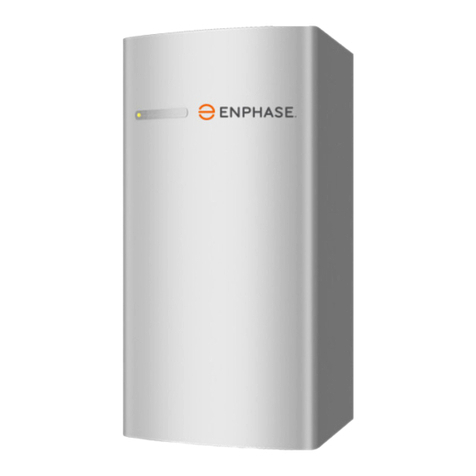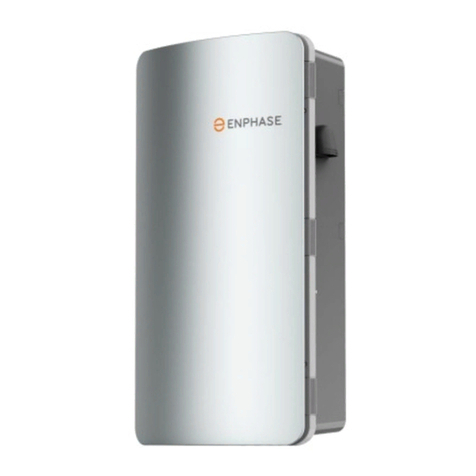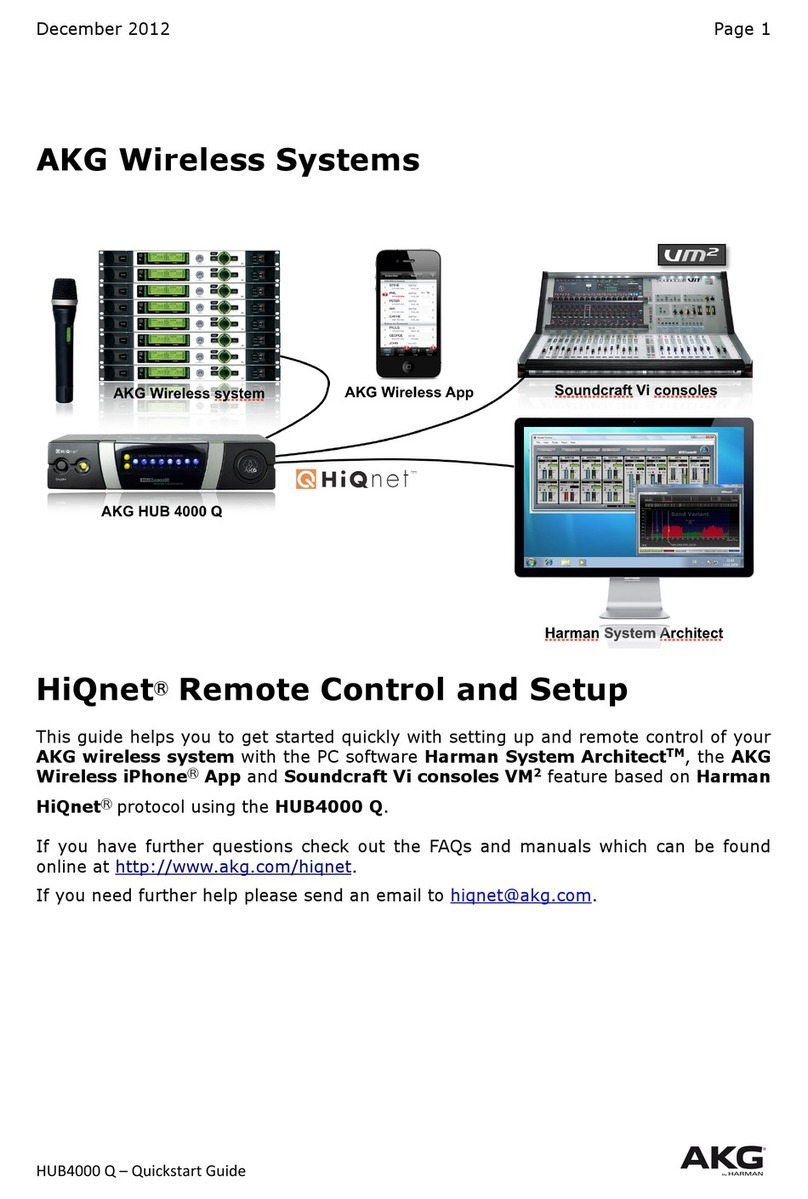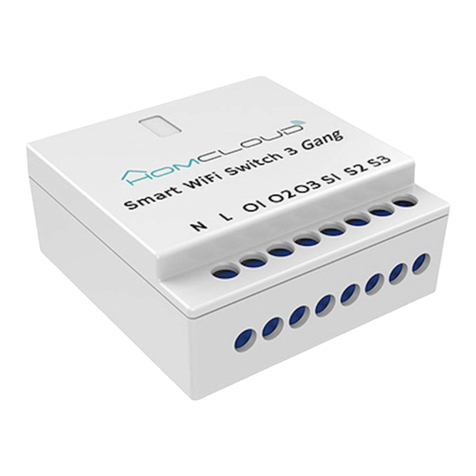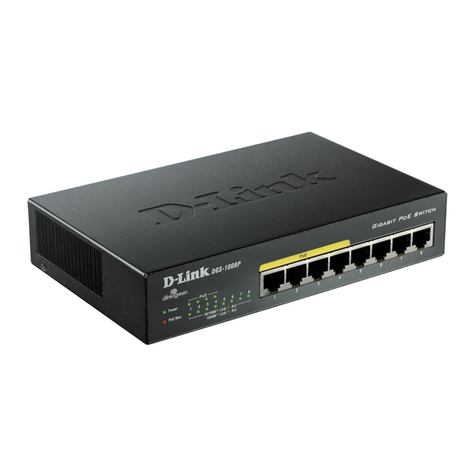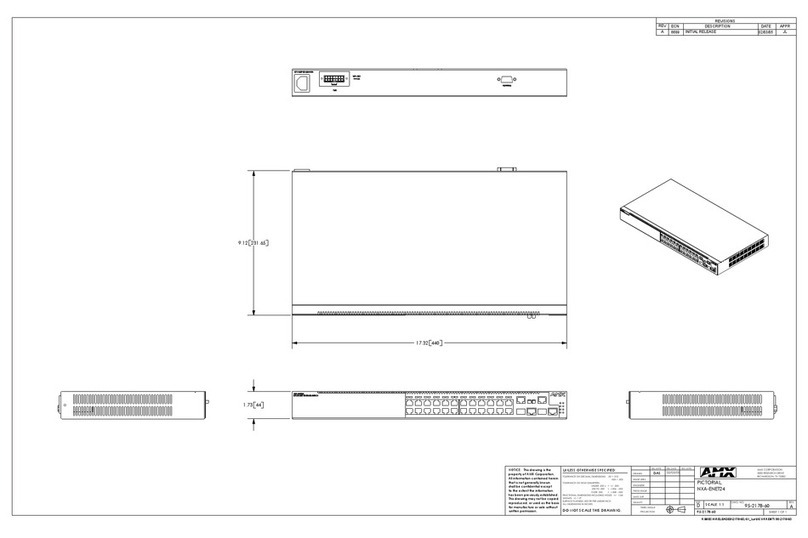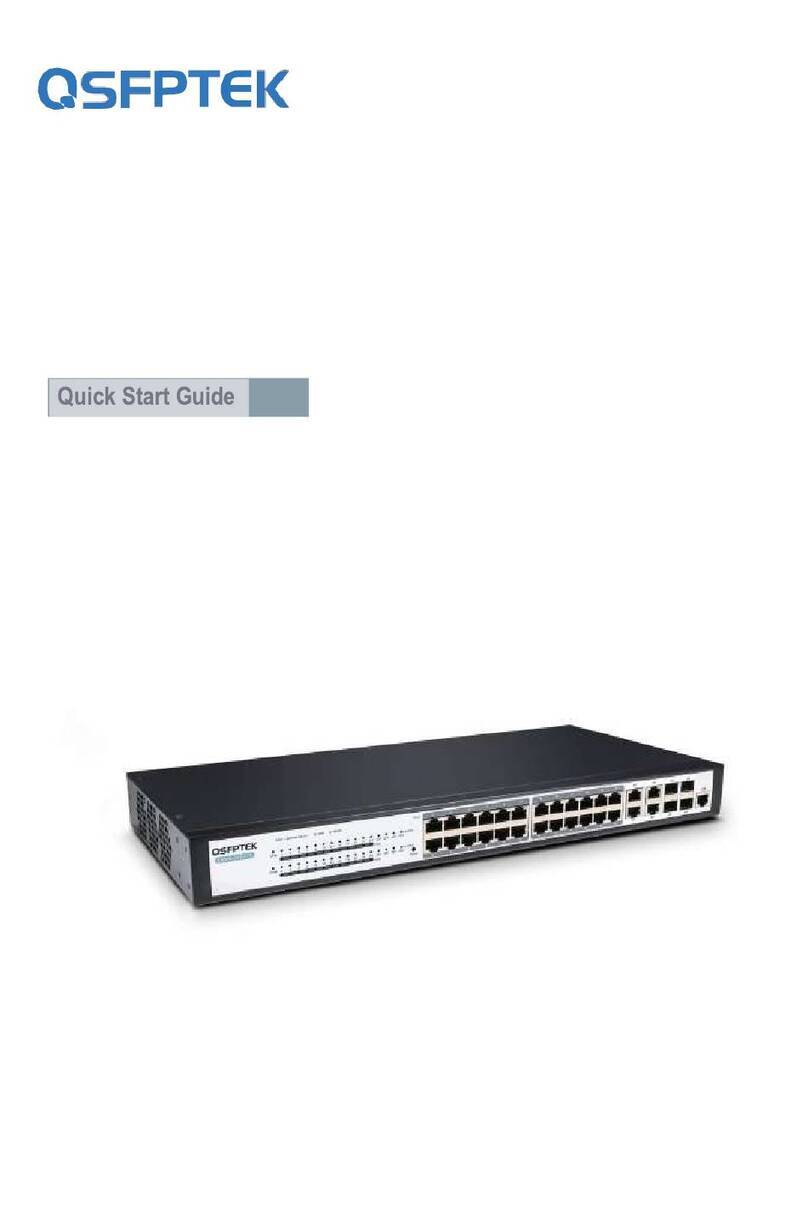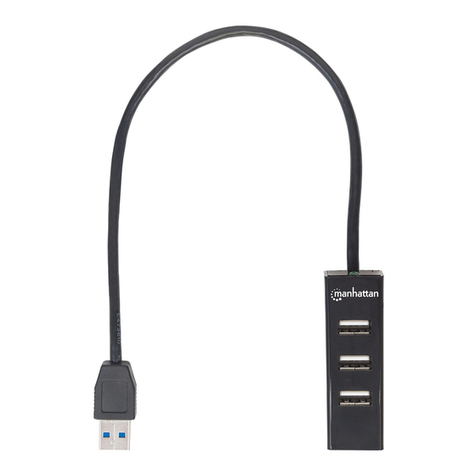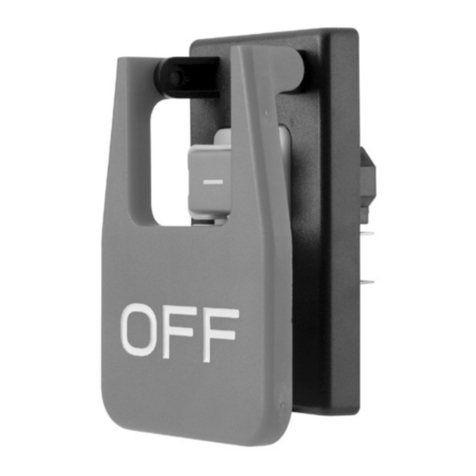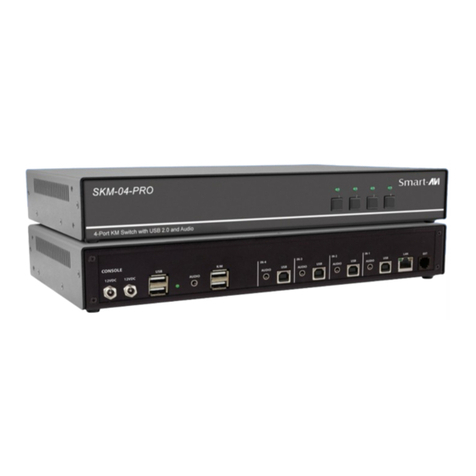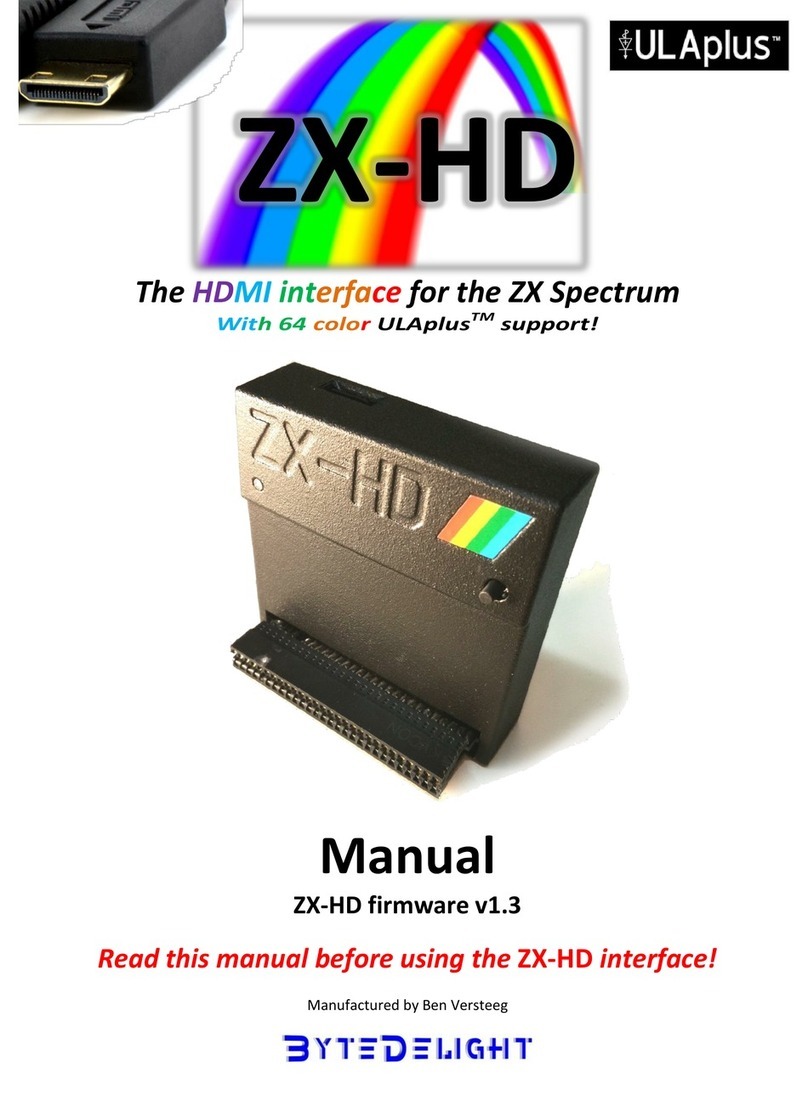enphase EP200G101 User manual

QUICK INSTALL GUIDE Model number: EP200G101-M240US00
Install the Enphase Enpower Smart Switch
To install the Enphase Enpower™ smart switch and the Enphase Enpower wall-mount bracket, read and follow all warnings and instructions in this guide and in
the Enphase Enpower Installation and Operation Manual at enphase.com/support. Safety warnings are listed on the back of this guide. These instructions are
not meant to be a complete explanation of how to design and install an energy storage system. All installations must comply with national and local electrical
codes and standards. Only qualied electricians shall install, troubleshoot, or replace the Enpower.
The Enphase Ensemble System includes the Enphase Enpower™ smart switch with Microgrid Interconnection Device (MID) capability, which
consolidates interconnection equipment into a single enclosure and streamlines grid-independent capabilities of PV and storage installations
by providing a consistent, pre-wired solution for residential applications. Along with MID functions, it includes PV, storage, and generator input
circuits.
For installing Enpower with 3rd party
PV inverter please refer to the planning
guide document on Enphase Energy
Storage System for third party PV
inverters online on Enphase website.
© 2021 Enphase Energy. All rights reserved. Enphase, the Enphase logo, Enpower smart switch, Encharge storage system, IQ Envoy, IQ combiner, IQ microinvert-
er, Installer Toolkit, Enlighten and other trademarks or service names are the trademarks of Enphase Energy, Inc. Data subject to change. Rev04-09-27-2021
Scenario 1:
Whole home backup with Enpower
as service entrance and PV combiner
connected to Enpower. This is the preferred
conguration for back up of the entire main
load panel. This conguration supports up
to an 60A breaker for the PV circuit and an
60A breaker for battery storage.
Scenario 2:
Whole home backup with Enpower
as service entrance and PV combiner
connected to main load panel. This is the
preferred conguration when you back up
the entire main load panel, and the size of
the PV combiner circuit is more than 60A. In
this conguration, the PV combiner circuit
connection space in Enpower is left vacant.
When existing PV combiner circuits are
connected to the main load panel, and you
want to add battery storage to the system,
you can keep the PV combiner connected
to the main load panel and connect only the
battery storage system to Enpower.
Scenario 3:
Partial home backup with main load panel
as service entrance and PV combiner
connected to Enpower. When PV circuits
breaker size is less than 60A, this is the
preferred conguration for partial home
backup with subpanel.
NOTE: The same installation scenarios
also apply to systems with legacy M-series
microinverters and Envoy-S Metered as
the communications gateway.

PREPARATION
A ) Inspect the packaging and the Enpower for damage. Do not install or
use the Enpower if it has been damaged in any way.
B ) Ensure that you have the following:
• One Enphase Enpower smart switch. The Enpower shipping box contains
an Enphase Enpower, mounting bracket, mounting hardware, and
literature kit (bag with labels and accessories: 150-00148). Among the
accessories are four-pin receptacles/dry contacts that will be used for
controlling external power relays.
* WARNING: The Enpower smart switch weighs 38.5 kg (85 lbs) and
will require two persons to lift the unit.
C ) Make sure you have the following required items:
• Enphase Encharge™ storage system, which is required for off-grid
applications.
• The Enphase Enpower requires a wireless connection to an Envoy,
which requires an Internet connection. Failure to maintain an Internet
connection may have an impact on the warranty. See enphase.com/
warranty for full terms and services.
• Wireless USB Adapter (COMMS-KIT-01) to be installed at Envoy for
communications with Encharge and Enpower. Includes USB cable
for connection to Envoy and allows wireless communication with
Encharge and Enpower.
• Two current transformers (CT-200-SPLIT) for consumption monitoring
• One current transformer (CT-200-SOLID) for production metering
• Enpower lifting handles (EP200G-HNDL-R1).
• Eaton BR Series breakers, rated maximum 60A for Encharge storage
system and Enphase IQ™ combiner.
• If breakers are required at the input or output to Enpower, use Eaton,
Type CSR breakers rated 100 A, 125 A, 150 A, 175 A or 200 A.
• Tools: conduit (with ttings and tting tools), drill, 5/32 inch pilot
bit (or metric equivalent), screwdriver, socket, wrench, adjustable
wrench, torque wrench, level, 5/32 inch Allen key (or metric equiva-
lent), conductor stripper, electrician’s hole saw (2 inch) kit or punch
set, and stud nder, if installing on studs.
• Conduit ttings (hubs) are required for all installations, and NEMA
Type 3 conduit ttings (hubs) are needed when installing out of doors
(one for each used conduit opening).
• Conduit ground hub rings.
NOTE: Conduit entry is allowed only through the bottom or bottom
sides of the unit.
• Three #10, 1/4”, or 5/16” lag bolts or screws, 7.6cm (three inches) long
(depending on attachment wall), for each wall-mount bracket. Check
with a structural engineer and local standards for local requirements.
• Washers for use between fastener heads and wall-mount bracket.
• Conductors rated at 75°C. For sizes, refer to the table on the unit
and to local codes.
• Over current protection: maximum in accordance with local standards.
• The door sheet metal is not required to be grounded, since it is
protected from live parts by other grounded metal and insulating
plastic materials, thus is considered unlikely to become energized.
INSTALLATION
Use the Enphase Installer Toolkit™ mobile app for iOS and Android devices.
It allows installers to congure the system while on site, eliminating the
need for a laptop and improving installation efciency.
NOTE: Only one Enpower can be commissioned in one system. Multiple
Enpowers can exist on the same site but they need to be in separate
systems, i.e. separate Enlighten/ITK activations.
Plan a location for the Enpower
The Enpower housing is NEMA type 3R and you can install it indoors or outdoors.
* WARNING: Protection against lightning and resulting voltage surge
must be in accordance with local standards.
A ) Follow all local codes and standards when planning for and installing
the Enphase Enpower Smart Switch.
B ) Choose a well-ventilated location where the ambient temperature
is within -40° C to 50° C (-40° F to 122° F), preferably out of direct
sunlight.
C ) Ensure that the mounting location can sustain the weight of the
Enpower and mounting bracket 38.5 kg (85 lbs). The wall must include
studs that can bear 38.5 kg (85 lbs) or can be of masonry or other
suitable structure that can bear the weight.
D ) Check the mounting location clearances:
• Indoors: at least 15cm (six inches) off the ground, 15cm (six inches)
from the ceiling, and 15cm (six inches) on
each side.
• Outdoors: at least 91cm (three
feet) off the ground and 15cm
(six inches) on each side.
E ) Ensure that there are no pipes or
electrical conductors where you
plan to drill.
F ) Plan to maintain at least 90cm
(three feet) of clearance in front
of the Enpower.
G ) Consider the dimensions of
the Enpower, easy access, unit
height, conduit entry, and length
of cable when selecting the
location.
H ) Select a location where you
can interconnect to the site’s
load center using the Enphase
Enpower.
1
Scenario 4:
Partial home backup with main load panel
as service entrance and PV combiner
connected to subpanel. This is the
preferred connection conguration for
partial home backup using a subpanel when
the PV circuit breaker size is more than
60A. The space available in Enpower for
combiner (solar) connection is left vacant.
width = 19.7 in.
36 in.
depth = 9.7 in.
Enpower dimensions

Install the wall-mount bracket
A ) Mark a plumb line over the wall stud as a guide.
* WARNING! Multiple risks. Make sure not to drill or attach into
electric wiring or pipes that are in the wall!
B ) Remove the wall mount bracket only from the shipping box.
C ) Place the wall-mount bracket on the wall so that the mounting holes in
the middle of the bracket align with the center of the stud. Use a level
to keep the bottom of the wall-mount bracket level.
D ) Use the #10, 1/4”, or 5/16” wood screws (or masonry attachments
if installing in masonry) to attach the bracket using one screw and
washer for each slot. The slot size of the Enpower wall mount bracket
is 8.5mm. Use an appropriately sized washer for each of the screws,
and check with a structural engineer and local standards for local
requirements.
E ) Verify that the wall-mount bracket is level, solidly attached to the wall,
and oriented for upright installation of the Enpower.
* WARNING! Risk of injury and equipment damage. Do not mount
an Enpower on a bracket that is not properly attached to a wall.
* WARNING! Risk of injury and equipment damage. Protect the
Enpower from impact damage and improper use.
2
3
D ) Repeat on the other side with the second handle.
* WARNING! Risk of injury and equipment damage. Two persons
are required to lift the Enpower.
E ) Use the lifting handles, take the
Enpower from the packaging,
making sure it is top side up
(upright). Enpower is designed
only for vertical installation
without inclination (must be
level).
F ) Lift the Enpower slightly
above the installed wall mount
bracket and allow it to slide
down so that the bracket facing hooks set into both the top and
bottom shelves of the wall mount bracket.
G ) Allow the Enpower to slide down until the Enpower is fully seated on
the wall-mount bracket shelf.
* WARNING! Risk of injury and equipment damage. Do not release
the Enpower until you ensure that the Enpower is fully seated in the
wall-mount bracket shelf.
H ) For each handle, pull the plunger tabs
to release them and remove the lift
handles.
I ) Reserve the handles for the next
installation.
J ) On the bottom handle mounts, use the
two provided partial-threaded custom
M6 screws to secure each side of the
Enpower and tighten to 0.5 N•m (4.4
lb•in) or less.
The threaded portion of the screw
engages with the bracket, while the un-
threaded portion of the screw engages
with the hole in the bracket to prevent
vertical movement of the bracket.
* WARNING! Risk of injury and
equipment damage. Do not skip this
step. Without these screws in place, the
Enpower may fall and cause injury or
damage if bumped or shaken.
K ) Use the four ller plates, provided in the
lit kit, to cover the screws.
Enpower
Wall Mount Bracket Align with stud
Bracket
shelf
8.5 mm mounting
slots
Attach handles
Bracket facing hooks
on back of the Enpower
Unbox and mount the Enpower on the wall
* WARNING: Risk of injury. Take care when lifting. The Enpower is
heavy 38.5 kg (85 lbs).
* WARNING! Risk of injury and equipment damage. Avoid dropping
the Enpower. Doing so may create a hazard, cause serious injury, and/
or damage the equipment.
A ) Remove the upper Enpower box, and locate the slots on both sides of
the Enpower enclosure.
B ) Locate the lifting handles (sold separately) and check that the
plungers are extended and ready to engage into the Enpower slots.
C ) Align one handle on one side of the Enpower and press the handle
into the slots, and slide the handle toward the top of the Enpower
enclosure until it clicks into place. Check that the handle is secure.
Install breakers as needed
The Enpower includes one two-pole 40A circuit breaker that feeds the
neutral forming transformer (NFT). You can install additional breakers,
if needed. You must follow all NEC and local electrical codes.
Install breakers as needed for the AC grid, main load, Enphase IQ Com-
biner, Enphase Encharge batteries, and generator. These breakers are not
included and must be ordered separately.
NOTE: You must install a backup loads breaker if required by local code.
* WARNING! Risk of injury and equipment damage. Use only the
breakers listed in this table.
List of allowed breakers and hold down kits:
Enphase Model No. Type and Eaton part no.
BRK-100A-2P-240V
BRK-125A-2P-240V
BRK-150A-2P-240V
BRK-175A-2P-240V
BRK-200A-2P-240V
BRK-20A-2P-240V-B
BRK-30A-2P-240V
BRK-40A-2P-240V
BRK-60A-2P-240V
EP200G-NA-HD-
200A
• Main Breaker, 2 pole, 100A, 25kAIC, CSR2100
• Main Breaker, 2 pole, 125A, 25kAIC, CSR2125N
• Main Breaker, 2 pole, 150A, 25kAIC, CSR2150N
• Main Breaker, 2 pole, 175A, 25kAIC, CSR2175N
• Main Breaker, 2 pole, 200A, 25kAIC, CSR2200N
• Circuit Breaker, 2 pole, 20A, 10kAIC, BR220B
• Circuit Breaker, 2 pole, 30A, 10kAIC, BR230B
• Circuit Breaker, 2 pole, 40A, 10kAIC, BR240B
• Circuit Breaker, 2 pole, 60A, 10kAIC, BR260
• Eaton type BR circuit breaker hold-down screw
kit, BRHDK125
Breaker installation positions are noted in the diagram.
4

Install breakers as needed continued
A ) Ensure that the Enpower is completely de-energized.
B ) Open the three latches that lock the enclosure door. To release the
latch, pull the latch handle forward and then to the right. With all the
latches opened, swing open the enclosure door.
* WARNING: Risk of equipment damage. Do not remove the
pre-installed solar shield attached to the enclosure door.
C ) Use a Phillips screw driver to loosen the six screws along the
periphery of the deadfront. Support the deadfront to keep it from
falling while performing the next step.
D ) While supporting the deadfront, use a screwdriver to disconnect the
deadfront ground wire from the grounding bar before the deadfront is
removed.
E ) Use the two tabs on the front to assist handling the deadfront during
the removal. Keep the deadfront and screws handy as you will need
them later.
* WARNING: Risk of electric shock. To maintain the warranty, do
not modify the deadfront other than to remove or replace ller plates,
as needed.
F ) If you install a main breaker or load breaker, remove the standard lugs
before installing the Eaton CSR breaker. By default, lugs are provided
in the Enpower unit for connection to the mains and to the load. In
case of usage without breakers, the conductors are connected directly
to these lugs. When breakers are used, the lugs are replaced with
breakers during installation.
G ) Remove a ller plate from the deadfront for each breaker position
you will use. Refer to the breaker position diagram to the left. To
remove the ller plate, press the two snaps inward while gently
pushing the ller plate out.
H ) For the Encharge, AC Combiner or Generator connection, snap the
appropriately sized BR series two-pole Eaton breaker onto the busbar,
using only the breaker positions indicated in the diagram on the door of
the unit. Breaker functional position are not interchangeable with one
another. The wires to be connected to each breaker are located beside
each breaker position. Remove the heatshrink cap on the wire ends
before inserting into the breaker.
4I ) Install each breaker by rocking it to the left, catching the clips that hold it
in place. Then rock the breaker to the right so it is fully seated and secure.
J) The generator breaker position can be used for the below purposes if
generator is unused:
1. Power the control transformer to enable the auxiliary contact load/
PV shedding feature
2. Connect the subpanel backup load breaker for <100A load subpanel.
You can connect the main breaker of the subpanel to this position,
since the load side lugs in Enpower do not support <100A breaker or
<1AWG wires.
Ensure you stick the “BACKUP LOADS” label from the load control kit, on
top of the “GENERATOR” embossing, on the Enpower deadfront.
K ) For the main load breaker, use an appropriately sized CSR Eaton
breaker. Install at the location
indicated in the diagram on
the door of the unit.
L ) Remove the mains/load lugs
by unscrewing the two nuts
holding the lugs. Re-use
the same nuts to x the
CSR breakers in the same
position. Torque to 4 N•m
(35.4 lb•in).
M ) Use the 8-32 screw (from the
lit kit marked 150-00148 that
ships with the Enpower) to
secure the mains breaker (not
the load breaker). Use a T20
drive to tighten the 8-32 screw
to 1.5 N•m (13.3 lb•in). Do not
use any other screw.
N ) Check that all breakers are
properly seated.
O ) Use the included stowed conductors, as labeled, to wire the circuit
breaker(s) for the Encharge batteries, Enphase Combiner, and generator,
as needed. The stowed conductors are provided with crimped-on ferrules
with end caps to prevent accidental contact. Remove the conductor end
caps as needed.
P ) Torque the breaker connections as listed in the following and in the
conductor table on the unit.
Q ) Purchase and install an Eaton type BR circuit breaker hold-down screw kit
(SKU: EP200G-NA-HD-200A) to secure only the Encharge and generator
double-pole circuit breaker(s).
Connections Wire size (AWG) Torque (N•m / lb•in)
Main lugs
Backup load lugs (use a 1/4” hex drive) Cu/AL: 300 KCMIL - 1 31.1 / 275
CSR breakers bottom wiring lugs Cu/AL: 300 KCMIL - 2 28.2 / 250
BR breakers (wire provided) 6 3.1 / 27
AC Combiner lugs,
Encharge lugs, and
Generator lugs
14 - 10
8
4 - 6
2 - 3
2.8 / 25
3.4 / 30
3.9 / 35
4.5 / 40
Neutral - large lugs (use a 3/8” hex drive) Cu/AL: 300 KCMIL - 6 31.1 / 275
Neutral and ground bars
Large holes (5/16-24 UNF) 1/0 - 3
4 - 6
8
10 -14
5.6 / 50
5.1 / 45
4.5 / 40
4.0 / 35
Small holes (10-32 UNF) 6 - 8
10 -14
2.8 / 25
1.7 / 15
Required practices when
torquing connections:
• Always follow NEC
2017 110.4 (D)
dictates.
• You must use a cali-
brated torque tool to
achieve the indicated
torque values.
• Use tamper-proof
torque mark/
paint after torquing
connections.
Ground wire
Load breaker
Encharge
breaker
AC Combiner
breaker
Generator
breaker
Mains breaker
Install 8-32
screw with 1.5
N•m torque
CSR breaker upper
lugs: 4 N•m torque
CSR breaker bottom
wiring lugs: 28.2 N•m
torque

Control PCBA & cover
Breaker spaces for auto
transformer, generator,
AC Combiner and
Encharge circuits
Eaton breaker
CSR2100N/2150N/200N
Two general purpose
relay I/O
A: Up to 80A to PV Combiner
B: Up to 80A to Encharge
C: Up to 200A to backup load panel
D: Up to 60A to generator
A B C D From utility meter or
main load panel
AC power wire
Generator I/O
Ground
Neutral
Main service disconnect
Eaton breaker
CSR2100N/2150N/22000N
200A main MID relay
5
Wire the eld connections
+ DANGER! Risk of electric shock. Check that all circuits connecting to the
Enpower are de-energized before wiring.
* WARNING! Do not install consumption CTs on the conductors above the
common busbar or on the main conductors below the main breaker if the
main breaker is used as service entrance. If the main breaker is the service
entrance breaker, you must install the CTs on the conductors directly above
the MID relay.
A ) Drill conduit entry holes as needed, and install conduit grounding lugs for each
opening. Be sure to reseal unused conduit entry holes with sealing plugs.
NOTE: Main supply conductors may enter the Enpower from the bottom or from
the bottom-left side. Backup load conductors may enter the Enpower from the
bottom or bottom-right side. Encharge, Combiner and generator conductors
may enter from the bottom, bottom-left or bottom-right sides.
B ) Size the conductors (Line, Neutral and Ground) depending on the breaker or
fuse, proper ampacity, and voltage rise requirements according to local codes.
Refer to the conductor rating table on the door of the Enpower.
C ) If the Enpower is not installed as service equipment1, you must remove the main
bonding jumper connected between the grounding bar and the neutral assem-
bly. Refer to the wiring diagram.
NOTE: Do not modify or rewire any of the other pre-installed wiring or bonding
connections in the Enpower.
D ) If Enpower is installed as service equipment1:
• Connect a grounding electrode conductor to the grounding bar.
• From the lit kit, place the label “GROUNDING ELECTRODE TERMINAL” adjacent
to the grounding bar.
• From the lit kit, place the label “SUITABLE FOR USE AS SERVICE EQUIPMENT”
/ “MAIN SERVICE DISCONNECT” on the deadfront near the main breaker/
service disconnect.
• If Enpower is not used as service equipment, these labels should not be used.
E ) Connect Lines, Neutral, and Ground. For details, refer to the conductor table on
the unit for sizes and refer to local codes.
* WARNING! Risk of equipment damage. Always connect to two Lines (ac-
tive), one neutral, and one ground.
F ) Connect the AC wires of Enphase Combiner, Encharge batteries,
and generator into the terminal lugs at the bottom of the
Enpower load center on the left.
* WARNING: Do not connect the AC wires directly into the
breakers. The AC wires go into the terminal lugs as shown in
the label.
G ) After all conductors are connected and secured, check that
there are no exposed conductors or stray wires.
H ) Gently arrange all the conductors and connectors inside the
cabinet.
+ DANGER! Risk of electric shock. The system is not ready
to be energized! Do not close any circuit breaker yet.
NOTE: The polarity of L1 and L2 is swapped inside Eaton CSR
series main breakers. Installers should follow L1 and L2 on the
following image when installing consumption CTs.
*The extra lug near the top right side of NFT (auto transformer) is a
manufacturing test terminal intentionally unpopulated with no end user
application.
Conduit guidance -
bottom entry Conduit guidance -
side entry

Set Up the Power Control System
The Enpower device, when used with Envoy and Production as well as Con-
sumption/PCS CTs, enables the Power Control System (PCS) functionality in
the Enphase Storage System.
The Enphase Storage System supports 2 PCS use cases:
• Import Only mode for Energy Storage System (ESS): Enphase Storage
System can import power from the Area Electric Power System (EPS)
for charging purposes but does not export active power from the ESS
to the Area EPS. The ESS mode of Import Only applies irrespective of
the congured battery smart prole, i.e., Self-Consumption, Full Backup,
or Savings (Time of Use) with optimization. The ESS Import Only mode
applies irrespective of whether the solar microinverters are IQ6/IQ7 or
M215/M250.
• Main Panel Upgrade (MPU) avoidance: In the partial home backup
scenario, the PCS limit the currents backfed into the main panel as
allowed by 2020 NEC article 705.13. This ensures that the main panel
complies with the NEC article 705.12.
NOTE: This use case is only supported with IQ Envoy and IQ6/7
series inverters.
This mode is applicable when the system is congured as in
Scenario 3 as described on page 1 of this QIG.
6
Device Supported SKU’s
1) PCS Controller (Envoy)
2) Current Transformers
3) Enpower Smart Switch
4) Encharge Storage
5) Microinverters
ENV-IQ-AM1-240, ENV-S-AM1-120
CT-200-SPLIT(needs 2 units)
CT-200-SOLID(included with the envoy)
EP200G101-M240US00
• ENCHARGE-3-1P-NA, ENCHARGE-10-1P-NA
• ENCHARGE-3T-1P-NA, ENCHARGE-10T-1P-NA
• IQ6 series (IQ6, IQ6Plus), IQ7 series(IQ7, IQ7A,
IQ7Plus, IQ7X, IQ7PD)
• M215 & M250 series
The National Electric Code(NEC) 2017 NEC 705.12(B)(2)(3)(b) allows
backfeed of current from solar/storage into the main panel subject to
the following limit
Backfeed allowed <= ((120% of busbar rating) – Ampacity of
the overcurrent protection device protecting the busbar )/
125%
Enphase, through its Installer Toolkit mobile app, also provides grid
proles that comply with PEL limits for various jurisdictions. In a
situation where both the PCS limit and a PEL prole are being used,
the maximum current backfed from the Enpower to the main panel is
always the lower of the PEL limit and the PCS limit.
NOTE: Import Only Mode for Energy Storage System is xed in
software and cannot be changed in the eld.
Conguring PCS In the Enphase Storage System
A ) Check that you have the following items. You must use the listed CTs
and Enphase IQ Envoy or the Envoy-S Metered with the Enpower and
Encharge for Power Control System functionality.
• Two current transformers (CT-200-SPLIT) for consumption/PCS
monitoring
• One current transformer (CT-200-SOLID) for production metering
(included with Envoy)
• IQ Envoy (ENV-IQ-AM1-240) or Envoy-S Metered (ENV-S-AM1-120):
The IQ Envoy can be standalone or integrated in an IQ Combiner box.
B ) Follow all instructions in the IQ Envoy or IQ Combiner Quick Install
Guide to ensure that CTs are installed and wired correctly with correct
polarity. Refer to the following diagram for the locations and polarity (arrow
on top of CT) on the CTs.
For whole home backup conguration, the CTs should be placed in the
same location (Production CT in combiner; PCS CT in Enpower) as shown
in the diagram PCS CT installation within Enpower.
C ) When being used for PCS, you must install the CT-200-SPLIT current
transformers inside the Enpower on the conductors above the MID relay.
The arrows on the Consumption/PCS CT must point towards the loads,
towards the busbar inside the Enpower or upwards, when the CTs are
installed above the MID relay. Refer to the image on the next page for the
Consumption/PCS CT location and wiring to the IQ Envoy.
D ) You must protect all PCS controlled busbars and/or conductors with
suitably rated overcurrent devices that are appropriately sized for the
busbar rating or conductor ampacity. Similar setup is required for a system
with M215 or M250 microinverters and an Envoy S metered. Refer to the
Envoy S metered or IQ Envoy/IQ Combiner QIG to see wiring details for
CTs.
E) You must indicate, with a label, the maximum current setting for back-
feed from Enpower that is controlled by PCS. Apply a label on the Enpower
deadfront indicating the maximum current setting for back-feed from En-
power that is controlled by PCS. An example of the required label is shown
as follows. Record the maximum operating amps value on the label.
For more details, refer to the Technical Brief
https://support.enphase.com/s/article/Technical-Brief-PCS-Integration-in-Enphase-Storage-System
THE MAXIMUM CURRENT BACKFED BY THIS SYSTEM TO THE MAIN
PANEL MAY BE CONTROLLED ELECTRONICALLY. REFER TO MANU-
FACTURER’S INSTRUCTIONS FOR MORE INFORMATION
PCS CONTROLLED CURRENT SETTING: ___________ AMPS
Encharge
AC Combiner

PCS CT installation within Enpower
Set Up the Power Control System (continued)
6
F ) For Production as well as Consumption/PCS CTs, you must apply the
following label to each CT when the system is congured to use PCS-based
current limiting.
The available space on the CTs for labeling is as follows.
Consumption/PCS CT (CT-200-SPLIT):
• Left side: 20mm(vertical) x 14mm(Horizontal)
• Back side: 20mm (vertical) x 20mm(Horizontal)
Production CT (CT-200-SOLID):
• 9mm(vertical) x 30mm(horizontal)
This sensor is part of a Power Control System. Do not re-
move or disable. Replace with same type and rating.
NOTE: The maximum operating currents in controlled busbars or
conductors are limited by the settings of the Power Control System
(PCS) and may be lower than the sum of the currents of the connected
controlled power sources. The settings of the PCS controlled currents
may be used for calculation of the design currents used in the relevant
sections of NEC Article 690 and 705.
* WARNING! Risk of electric shock and re. Only qualied personnel
are permitted to set or change the setting of the maximum operating
current of the PCS. The maximum PCS operating current setting shall
not exceed the busbar rating or conductor ampacity of any PCS con-
trolled busbar or conductor.
IQ Envoy Terminal Block
Relay contacts
(if needed)
white
blue
Not used
white
blue
Consumption CTs
The arrows must point
toward the load, away
from the grid.
P1 C1 C2
1 2 3 4 NO
Ref
Common
C
Digital Input Relay
PD, B300
OVC II
L1 L2
N
CU, 75C, 14AWG MIN
MEAS CAT III
OVC III Production | Consumption

G) PCS Export Limiting via ITK
PCS that ensures the Import Only mode for ESS is always running in the
system and the import only mode is not changeable. Energy storage
never exports to grid and therefore never backfeeds the main panel in a
partial backup scenario if consumption/PCS CTs are placed as outline
in section 6.
This section outlines how to congure current export limiting to limit PV
current when PV current exceeds the allowed backfeed/export.
The MPU avoidance use case of PCS can be enabled via ITK during
installation at Step 2 b) Site Conguration as shown in the gure below:
NOTE: The MPU avoidance use case requires conguration using the
Enphase installer toolkit version v3.0.8 or higher and Envoy software
version 6.1.32 or higher.
In the site conguration menu, the user can see 2 options:
• Select Backup Type
• PCS Export Limiting
As the MPU avoidance conguration can only be enabled in the partial
home backup mode, the installer has to rst select the ‘Partial Home
Backup’ conguration under ‘Select Backup Type’.
Then, in the ‘PCS Export Limiting’ section, the installer is required to
enter the type of micro-inverters (IQ7, IQ6) & the number of micro-invert-
ers of each type. Along with this, the installer adds information on the
rating of the main load panel busbar, the main service breaker rating &
can also set the PCS Controlled Export Current Limit. If this value is not
set, the system auto-calculates the export current limit based on the
2017 NEC.
Auxiliary Contact Connections
Enpower has three I/O ports. I/O-1 has two normally open auxiliary contacts
(NO1, NO2) and I/O-2 has two normally close auxiliary contacts (NC1, NC2)
for load and excess PV control; each auxiliary contact has two terminals.
Gen-I/O has one normally open auxiliary contact (NO3) for generator control,
and this contact has three terminals. All the auxiliary contact relays are rated
for pilot duty at 24Vac/Vdc (nominal) and 1 Amp.
A. Auxiliary Contact connections for shedding excess PV and load
For making the connections you would need the following components: a
denite purpose contactor, control transformer, and fuse.
For recommendations please refer the tech brief
https://support.enphase.com/s/article/Load-and-Solar-Circuit-Control-using-Enpower-Auxiliary-Contacts
Steps for connecting auxiliary contact for shedding excess PV or load:
1. Use wires sized per local code requirements taking into consideration
the voltage drop/rise and upstream breaker or fuse.
2. Connect one of the primaries of the control transformer to 120V
breaker, and the other wire to the neutral bus in the backup load panel
via an OCPD such as an inline fuse.
3. Connect one wire of the secondary of the control transformer to one of
the terminals of either NO/NC auxiliary contact from I/O-1 or I/O-2 on
Enpower.
4. Connect the other terminal of the auxiliary contact to the 24Vac coil
terminal (usually named A1) of the denite purpose contactor.
5. Connect the other terminal of the contactor coil (usually named A2) to
the other wire of the secondary of the control transformer.
6. For shedding excess load:
a. Connect the L1 (and L2 if 240V) terminal of the denite purpose
contactor to the backup load panel protected by a breaker.
b. Connect the T1 (and T2 if 240V) terminal of the contactor to the
excess load circuit that needs to be shed.
7. For shedding excess PV:
a. Connect the L1 and L2 terminals of the denite purpose contactor to
the OCPD (e.g., breaker in the AC combiner) protecting the inverter
output circuit of the excess PV to be shed.
b. Connect the T1 and T2 terminals of the denite purpose contactor to
the inverter output circuit of excess PV that needs to be shed.
7

Line diagram for auxiliary contact connections image shows NO1 is used
to shed excess loads and NO2 is used to shed excess PV. See our techni-
cal brief, Load and Solar Circuit Control using Enpower Auxiliary Contacts
(https://support.enphase.com/s/article/Load-and-Solar-Circuit-Control-using-Enpower-Auxiliary-Contacts),
for detailed line diagram and other details.
B. Securing Auxiliary Contact to Enpower
Ensure you have the feed-through headers that are shipped with the Enpow-
er as part of the lit kit.
Follow the below steps to secure the headers to Enpower, as shown in Feed
through headers for I/O-1 and I/O-2 image.
1. Insert the wires from the transformer controller and the external
contactor into the feed through header.
NOTE: Supports AWG 28 to AWG 16 wire sizes
2. Tighten the screws on the top (torque 0.22Nm to 0.25Nm) to secure
the wires.
3. Insert the feed through header into the I/O-1 or I/O-2 ports on Enpower.
4. Tighten the screws on the side to secure the feed through header to
the I/O-1 or I/O-2 ports on Enpower.
Follow same procedure for Generator dry contact connections (There are 3
terminals on the Gen-I/O port as shown in Feed thorugh header for genera-
tor I/O image. Use the rst and third terminal for wiring.)
Auxiliary contacts In Enpower
Line diagram for auxiliary contact connections used for shedding excess load and PV.
Feed through headers for I/O-1 and I/O-2
Feed through header for generator I/O
2. Tighten these screws to
hold the wires in place
3. Insert into I/O port on En-
power in this orientation
1. Insert wires here
4. Tighten these screws to se-
cure the feed-through header
to the I/O ports on Enpower
Insert wires in these terminals

Generator Connections
A generator can be integrated with the Enphase Storage system without the
need for any external ATS. It supports both manual and auto-start genera-
tors.
NOTE: This system is only compatible with permanently installed generators
that are non-separately derived as per NEC 250.35(B).
Steps for connecting a generator are listed below:
A ) Wire the L1 and L2 AC wires from the generator into the generator lugs
on the Enpower.
B ) Ensure that the ground terminal of the generator is connected to the
ground bar inside Enpower. Size the generator’s equipment grounding con-
ductor as per NEC 250.122 and generator manufacturer’s instructions.
C ) Connect the neutral wire from generator to an appropriately sized posi-
tion on the neutral bar inside Enpower.
NOTE: Enpower does not switch the neutral and the ground from the gen-
erator. It only switches the feeders i.e., L1 and L2. Therefore, the generator
needs to be congured as a non-separately derived system.
D ) Buy and install an appropriately sized breaker for the generator on the
Enpower’s busbar and connect the L1 and L2 generator cables from Enpow-
er’s ATS board to this breaker.
NOTE: The maximum allowed breaker size is 60A. Select an Eaton BR
breaker model that has the hole for the additional fastener as per NEC
480.36(D). Available models: BR220B, BR230B, BR240B, BR250B. Eaton
breaker BR260 already has the hole.
8
E ) Purchase and install a hold-down screw kit (SKU: EP200G-NA-HD-200A)
to secure the Generator breaker.
F ) Install a pair of generator CTs (CT-200-SPLIT) for L1 and L2 at the En-
power’s Generator input terminal for power monitoring when the generator
is running. Detailed CT wiring is described in step 9.
G ) Use Enphase Installer Toolkit mobile application to commission and
program Enpower to control the generator.
H ) For 2-wire autostart generators, wire the Generator I/O port in Enpower
to the 2-wire remote start terminals of the generator. Refer Step 7 for steps
on how to secure the auxiliary contacts to Enpower. Follow local code
requirements for wire sizing.
I ) Autostart generators typically require a constant 120 Vac for battery
charger. This power can be drawn from the backup loads panel protected by
a breaker so that it is powered even during an outage.
J ) For autostart generators, have a certied contractor install the gas line
required to supply the unit.
K ) Some utility-sense based generators like the Generac Eco-Gen come
with the capability to auto start generators when system goes off grid by
sensing the absence of the 240V utility power. For such utility-sense based
remote start generators, install the utility sensing generator start/stop
control circuit. Wire the primary of a 120V/12V power supply to the backup
loads panel. Connect the secondary to the Generator auxiliary contact relay
on the Enpower. Wire the other end of the relay to the coil of the Normally
Close contactor. Connect the contactor to 240V from the backup loads
panel for utility sensing. Wire the other end of the contactor to the Generator
through a fuse.
For more details, refer to the Technical Brief
https://support.enphase.com/s/article/Generator-with-Enphase-storage
Line diagram for 2-wire remote start generator connection
Line diagram for utility sense based remote start generator connection

Use the Enphase Installer Toolkit to commission the Enpower. Once
connected to the Envoy, refer to the Installer Toolkit help topics for
more information.
CONFIGURE and ACTIVATE
OPERATION
If you do not see the Enpower information in Enlighten, check that the
Envoy and the Internet connection are working.
Field Adjustable Trip Points
Enpower has adjustable voltage and frequency trip points that may need
to be set depending upon local requirements. An installer can request
Enphase Customer Support for making requested changes to the
Enpower trip points. It is important to ensure that all electrical code re-
quirements as well as requirements imposed by local Authorities Having
Jurisdictions (AHJ) are followed while setting the trip points.
11
10
NOTE: If not commissioning the system you must ensure that the DC
switches on all Encharge batteries are turned off to avoid the depletion
of charge on the Encharge batteries.
Close and energize Enpower
* WARNING: Before energizing, make sure that ALL Enpower connections
are properly installed and conductors terminated.
A ) Reconnect the deadfront ground cable to the grounding bar, torque as shown
in the table on the unit label (and on page 4 of this guide), and replace the
deadfront using the six reserved screws. Tighten the cover screws using a
Phillips screw driver.
* WARNING! Risk of equipment damage. Ensure that no conductors are
pinched before replacing the cover.
* WARNING! Conductors are factory provided for the generator, AC Com-
biner and Encharge. If no generator is used with the system, these conductors
will not be terminated. If the Combiner does not connect to the Enpower, these
will also not be terminated. When these wires are not terminated, they should
remain stowed in the clips on the plastic frame supporting the panel board
interior and their end caps should not be removed.
+ DANGER: Risk of electric shock. There are many potential sources
of voltage. Check any Enphase Encharge battery, PV, or other generation
source for voltage.
B ) You must ensure that all electrical circuits external to Enpower are completed
and safe before energizing Enpower.
9
Install the Generator CTs to standalone Envoy or Envoy in the
Combiner box
A pair of generator CTs will be connected in parallel to the consumption CTs, if
present.
A ) Make sure that the main load center wires are de-energized until you have
secured the CT wires in the terminal blocks.
B ) Before running the CT wires through the conduit, use colored tape to mark one
of the CTs and the free end of its wires.
C ) Clamp the marked CT on Line 1 of the generator branch circuit inside the
Enpower box with the arrow on the CT pointing towards the Generator breaker.
D ) Clamp the unmarked CT on Line 2 of the generator branch circuit inside the
Enpower box with the arrow pointing towards the Generator breaker.
E ) Bring the CT lead wires out of Enpower to the standalone Envoy or Envoy in the
Combiner box
F ) Use a screwdriver to loosen the screw on the Envoy terminal block door and
open the door.
G ) Unscrew the Consumption CT wires if present
H ) For the marked CT
a. If the Consumption CT is present, use NEC approved wiring method to
splice the white wire of the CT with the white wire of Line 1 of the con-
sumption CT.
b. Connect the spliced white wires to the upper “C1” terminal of IQ Envoy (“IA•”
terminal for the Envoy-S Metered).
c. Splice the blue wire of the CT with the blue wire of Line 1 of the consump-
tion CT.
d. Connect the spliced blue wires to the lower “C1” terminal of IQ Envoy (“IA”
terminal for the Envoy-S Metered).
I ) For the unmarked CT
a. If the Consumption CT is present, use NEC approved wiring method to
splice the white wire of the CT with the white wire of Line 2 of the con-
sumption CT.
b. Connect the spliced white wires to the upper “C2” terminal of IQ Envoy (“IB•”
terminal for the Envoy-S Metered).
c. Splice the blue wire of the CT with the blue wire of Line 2 of the consump-
tion CT.
d. Connect the spliced blue wires to the lower “C2” terminal of IQ Envoy (“IB”
terminal for the Envoy-S Metered).
J ) Tighten each of the Envoy terminal block screws to 5 in-lbs (0.56 Nm).
K ) Close and secure the terminal block door of the Envoy.
C ) If you plan to energize Enpower without commissioning the system
in the same day, OPEN the NFT and Encharge breakers and CLOSE
the other breakers in the following order:
• Main breaker
• PV breaker
• Generator breaker
• Load breaker.
D ) If you plan to commission the system, follow the instructions in the
Enphase Installer Toolkit app for energizing Enpower.
E ) Energize the circuit feeding the Enpower. If installed, turn the breaker
feeding the Enpower to the on position.
F ) Close and secure the door of the Enpower.

Enphase Customer Support: enphase.com/en-us/support/contact
Safety and Advisory Symbols
+DANGER: This indicates a hazardous situation, which if not avoided, will
result in death or serious injury.
*WARNING: This indicates a situation where failure to follow instructions
may be a safety hazard or cause equipment malfunction. Use extreme
caution and follow instructions carefully.
✓NOTE: This indicates information particularly important for optimal system
operation. Follow instructions carefully.
Safety Instructions
+DANGER: Risk of electric shock. Risk of re. Only qualied electricians should
install, troubleshoot, or replace the Enpower.
+DANGER: Risk of electric shock. Risk of re. Do not attempt to repair the
Enpower. Tampering with or opening the Enpower will void the warranty.
If the Enpower fails, contact Enphase Customer Support for assistance at
enphase.com/en-us/support/contact.
+DANGER: Risk of electric shock. Do not use Enphase equipment in a manner
not specied by the manufacturer. Doing so may cause death or injury to
persons, or damage to equipment.
+DANGER: Risk of electric shock. Do not install the Enpower without rst
removing AC power from the photovoltaic system and ensuring that the DC
switch on the Enphase Encharge batteries are off. Disconnect the power
coming from the photovoltaics and ensure that the DC switch on the En-
charge batteries are off before servicing or installing.
+DANGER: Risk of electric shock. Risk of re. Do not work alone. Someone
should be in the range of your voice or close enough to come to your aid
when you work with or near electrical equipment.
+DANGER: Risk of re. Do not allow or place ammable, sparking, or explosive
items near the Enpower.
+DANGER: Risk of electric shock. In areas where ooding is possible, install
the Enpower at a height that prevents water ingress.
*WARNING: Risk of equipment damage. Enpower is shipped and stored on its
back. The upright position is only needed when installed.
*WARNING: You must install the Enpower only on a suitable wall using an
Enphase wall-mount bracket.
*WARNING: Before installing or using the Enpower, read all instructions and
cautionary markings in this guide and on the equipment.
*WARNING: Do not install or use the Enpower if it has been damaged in any
way.
*WARNING: Do not sit on, step on, place objects on, or insert objects into the
Enpower.
*WARNING: Do not place beverages or liquid containers on top of the
Enpower. Do not expose the Enpower to ooding.
✓NOTE: Perform installation and wiring, including protection against lightning
and resulting voltage surge, in accordance with all applicable local electrical
codes and standards.
✓NOTE: Because Encharge is grid forming, you must install signage in accord-
ance with NEC articles 705, 706, and 710.
✓NOTE: Using unapproved attachments or accessories could result in dam-
age or injury.
✓NOTE: Install properly rated over current protection as part of the system
installation.
✓NOTE: To ensure optimal reliability and to meet warranty requirements, the
Enpower must be installed and/or stored according to the instructions in this
guide.
✓NOTE: The Enpower is compatible only with the IQ Envoy or Envoy
S-metered communications gateway properly tted with USB hub, USB
radios, and production and Consumption/PCS CTs. The Envoy is required
for operation of the Enpower. Earlier versions of the Enphase Envoy commu-
nications gateway are incompatible.
✓NOTE: The Enphase Enpower is intended to operate with an Internet connec-
tion through the Envoy. Failure to maintain an Internet connection may have
an impact on the warranty. See Limited Warranty for full terms and services
(enphase.com/warranty).
✓NOTE: When replacing an Enphase Enpower, you must replace it with an
Enpower of the same type, with the same AC current rating.
✓NOTE: Properly mount the Enpower. Ensure that the mounting location is
structurally suited to bearing the weight of the Enpower.
✓NOTE: During use, storage, and transport, keep the Enpower:
• Properly ventilated
• Away from water, other liquids, heat, sparks, and direct sunlight
• Away from excessive dust, corrosive and explosive gases, and oil smoke
• Away from direct exposure to gas exhaust, such as from motor vehicles
• Away from falling or moving objects, including motor vehicles. If mounted
in the path of a motor vehicle, we recommend a 91cm (36-inch)
minimum mounting height
• In a location compliant with re safety regulations
• In a location compliant with local building codes and standards
1NOTE: Enpower is not suitable for use as service equipment in Canada.
SAFETY
IMPORTANT SAFETY INSTRUCTIONS. SAVE THESE INSTRUCTIONS. This guide contains important instructions that you must follow during installation
and maintenance of the Enphase Enpower. Failing to follow any of these instructions may void the warranty (enphase.com/warranty).
In Case of Fire or Other Emergency
In all cases:
• If safe to do so, switch off the AC breaker for the Enpower circuit, and if an
isolator switch is present, switch off the AC isolator for the Enpower circuit.
• Contact the re department or other required emergency response team.
• Evacuate the area.
In case of re:
• When safe, use a re extinguisher. Suitable types are A, B, and C dry chemical
re extinguishers. Additional extinguishing media include carbon dioxide, or
alcohol-resistant foams.
In case of ooding:
• Stay out of water if any part of the Enpower or wiring is submerged.
• If possible, protect the system by nding and stopping the source of the
water, and pumping it away.
• If water has contacted the UNIT, call your installer to arrange a inspection.
If you are sure that water has never contacted the battery, let the area dry
completely before use.
In case of unusual noise, smell or smoke:
• Ensure nothing is in contact with the Enpower or in the venting area on top of
the Enpower.
• Ventilate the room.
• Contact Enphase Customer Support at enphase.com/en-us/support/contact.
Safety Instructions, continued
Environmental Protection
ELECTRONIC DEVICE: DO NOT THROW AWAY. Waste elec-
trical products should not be disposed of with household
waste. Refer to your local codes for disposal requirements.
Other manuals for EP200G101
1
This manual suits for next models
1
Table of contents
Other enphase Switch manuals
Popular Switch manuals by other brands

Hewlett Packard Enterprise
Hewlett Packard Enterprise Brocade 32Gb/12 2SFP+ user guide
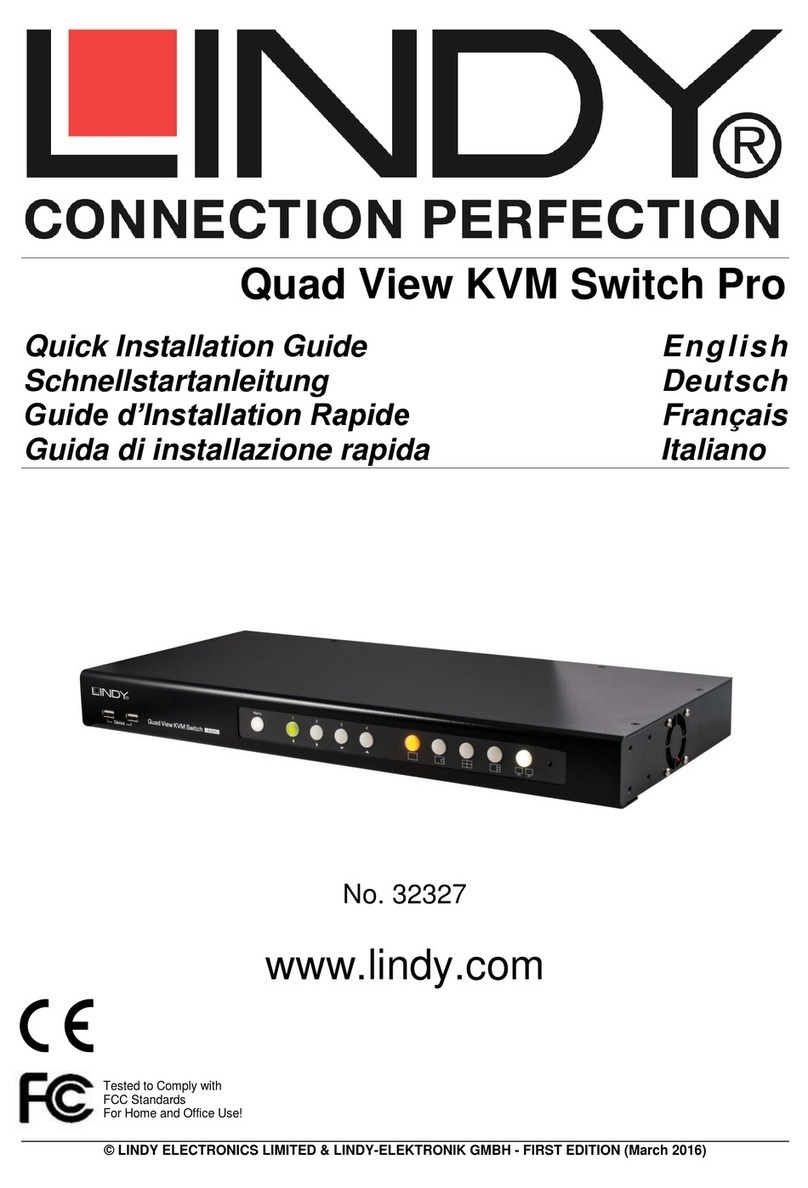
Lindy
Lindy 32327 Quick installation guide
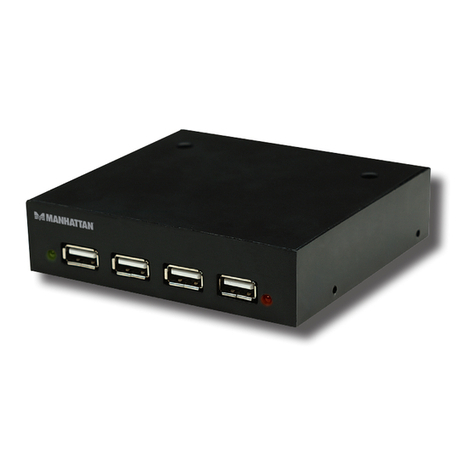
Manhattan
Manhattan 350310 user manual
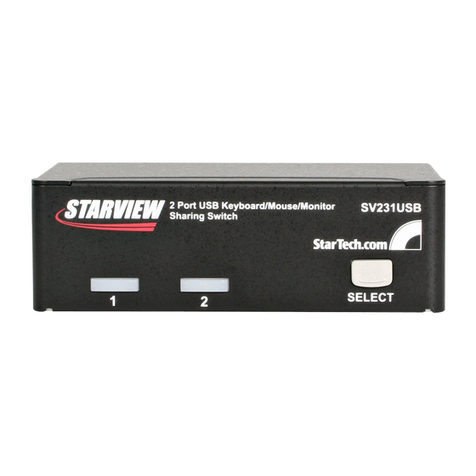
StarTech.com
StarTech.com StarView SV231USB user manual

HPE
HPE Aruba 2930M 24SR Product End-of-Life Disassembly Instructions

Kindermann
Kindermann 7488000070 user manual
